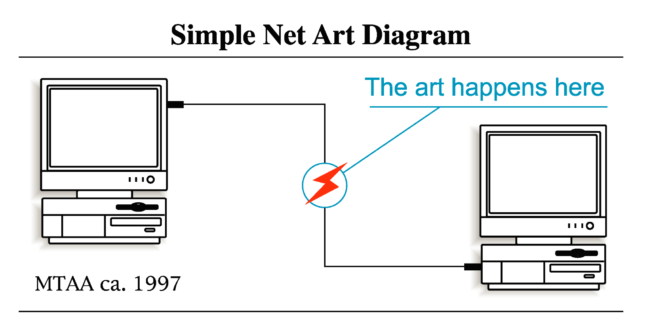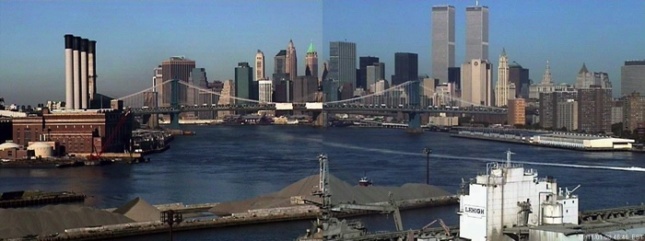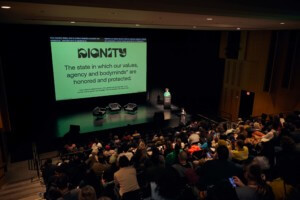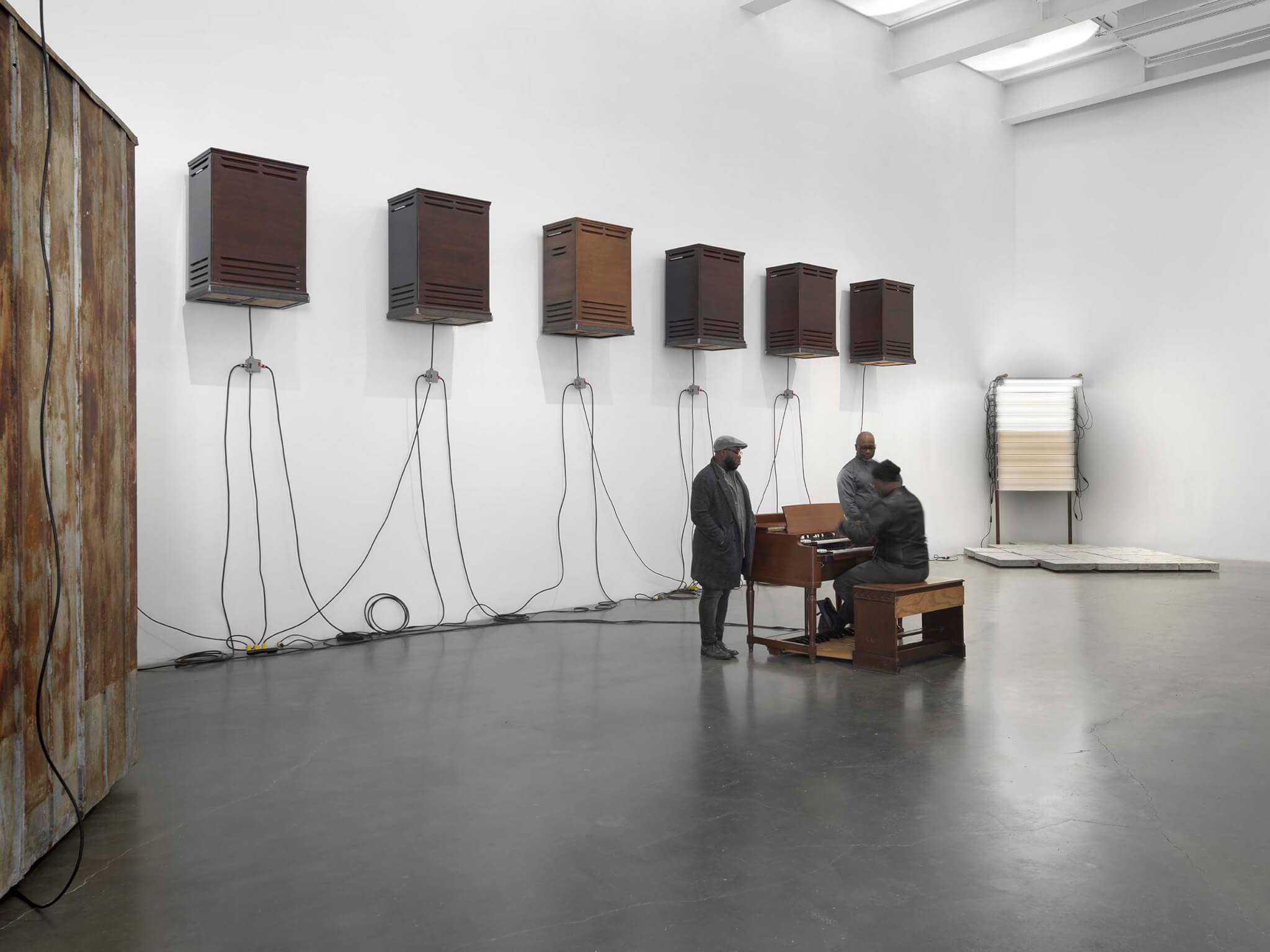What happens on the ‘net stays on the ‘net.
Or maybe not, according to the new exhibition The Art Happens Here: Net Art’s Archival Poetics, a history of net art from 1985 to today presented by Rhizome at the New Museum in New York. The show brings net art out of the tubes of the internet and into the gallery, part of an intensive archival project curated by Michael Connor, artistic director, Rhizome, with Aria Dean, assistant curator. The show focuses on sixteen artworks selected from Net Art Anthology—Rhizome’s major online exhibition of one hundred works from throughout net art history—born-digital art that both resulted from and influenced a rapidly changing network culture that pervades the real world, beyond the browser.

The show’s title comes from MTAA’s 1997 Simple Net Art Diagram, which outlines the relationship of computers, the network, the artists, and the art. Two personal computers are linked with a label, “The art happens here,” pointing to the space between the computers. An important distinction is made here—and in the show—between net art and a broader conception of digital art that focuses on techniques in a new digital media: “net” implies that the art is a performance that investigates how people relate to each other and these machines.
We can see how the artworks in this exhibition were at the front edge of using the technology and investigating what the critical and societal impacts might be in the future. These were social networks before social networks, tag clouds before tag clouds, and streaming services before streaming services. Goofier early works include Alexei Shulgin’s 1998 386 DX, a “band” (a computer) that performs punk music, and StarryNight, a 1999 conceptual visualization of Rhizome’s early email listserv content, displayed with tags that connected dots connected to event “pages.”

The later work in the show is more overtly political. The earlier works are more concerned with tautological questions about the medium/space of the internet: experiments in relating to one another and defining ourselves across new digital platforms, such as StarryNight and Simple Net Art Diagram. More recent works, however, signal more toward how we use these platforms—and their more advanced, codified descendants like Facebook—as places to enact politics. For example, Miao Ying’s 2007 Blind Spot is a Chinese dictionary with all the words redacted that the Chinese government would censor online. Artist-activist Morehshin Allahyari’s Material Speculation: ISIS was an attempt in 2016 to reproduce 3D-printed replicas of a set of twelve artifacts from the ancient cities of Hatra and Nineveh, destroyed the year before by ISIS.
Perhaps this evolution makes sense since those early experiments—the band in 386 DX or StarryNight for the Rhizome “website”—are also a form of political speculation about social relationships in the face of new technology. The show tracks these developments in the technology and art as well as changes in society that unfold alongside the art historical narrative of the show. Or perhaps it is less about the tracking of changes in broader culture, and more of a change in how the technology is used: As it becomes more user-friendly, it becomes available to people who are not only interested in it as an experimental medium. Or, as we become more comfortable with it, we begin to turn to how it can be employed critically, rather than simply as a technological experiment.
All of the works in the show resonate as a history that still echoes through our experience of online art, but also the internet in general. Are Facebook and Twitter net art projects, extended to their logical conclusion and rocket-fueled by capitalism? Like all good histories, it recasts our understanding of the present by presenting prescient works such as a recreation of Chu Lea Cheang’s para-fictional Garlic=RichAir, a 2002/3 work that speculated on a future where capitalism had collapsed, and garlic was the only currency. Artist Melanie Hoff created a video game for the 2019 show, complete with a Wi-Fi network where players could claim and trade their garlic. The work reads today like an early version of so many blockchain speculations that artists today are doing.

There is also a feedback loop between digital and physical in the net art posited here, which when viewed as a space for performance becomes a sort of new commons where different people come together, but also find people like themselves. Notably, Wolfgang Staelhe’s Untitled, turned a webcam into a lens for landscape photography as it broadcast the physicality of Manhattan’s skyline in 2001, and serendipitously interfaced with current events as it captured the events of 9/11.
It would be a stretch to say these online places have replaced physical terrain as the main place of community as well as conflict, but it could be said that they inherited the DNA of conceptual art and spatial practice, leaving it a final, feral Wild West for experimentation. Today, we have more controlled spaces such as Facebook that are mediated by corporate interests, but new spaces are always opening up online and underneath it in places like crypto-raves and online black markets where artists can get their rocks off. Perhaps it is no coincidence that one of the most striking works—or spaces of performance—in the show is Olia Lialina’s Give Me Time / This Page Is No More, an archive of GeoCities websites, logged at first at a moment saying, “under construction” and then at a moment when they had been closed. GeoCities was shut down by Yahoo! in 2009.











